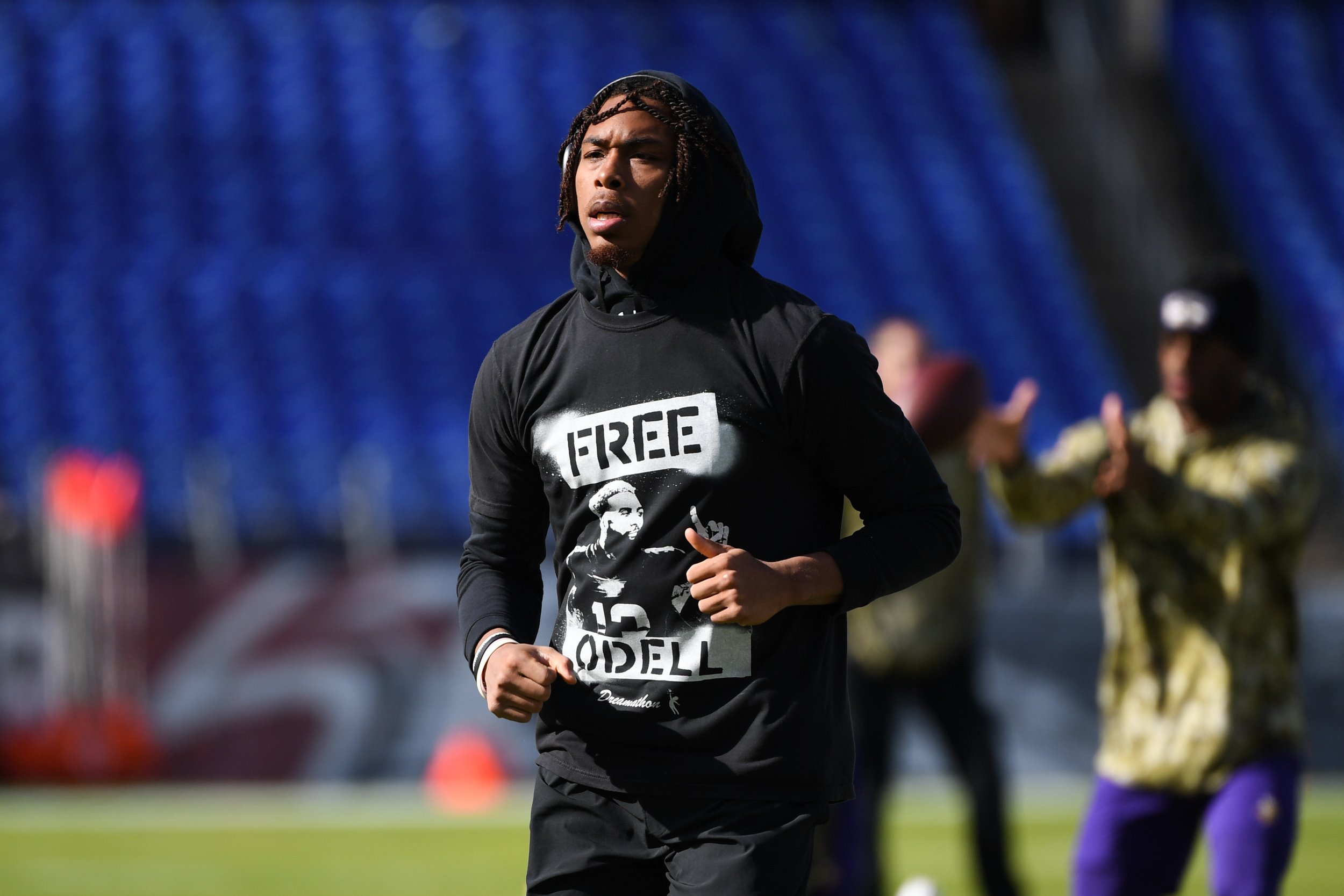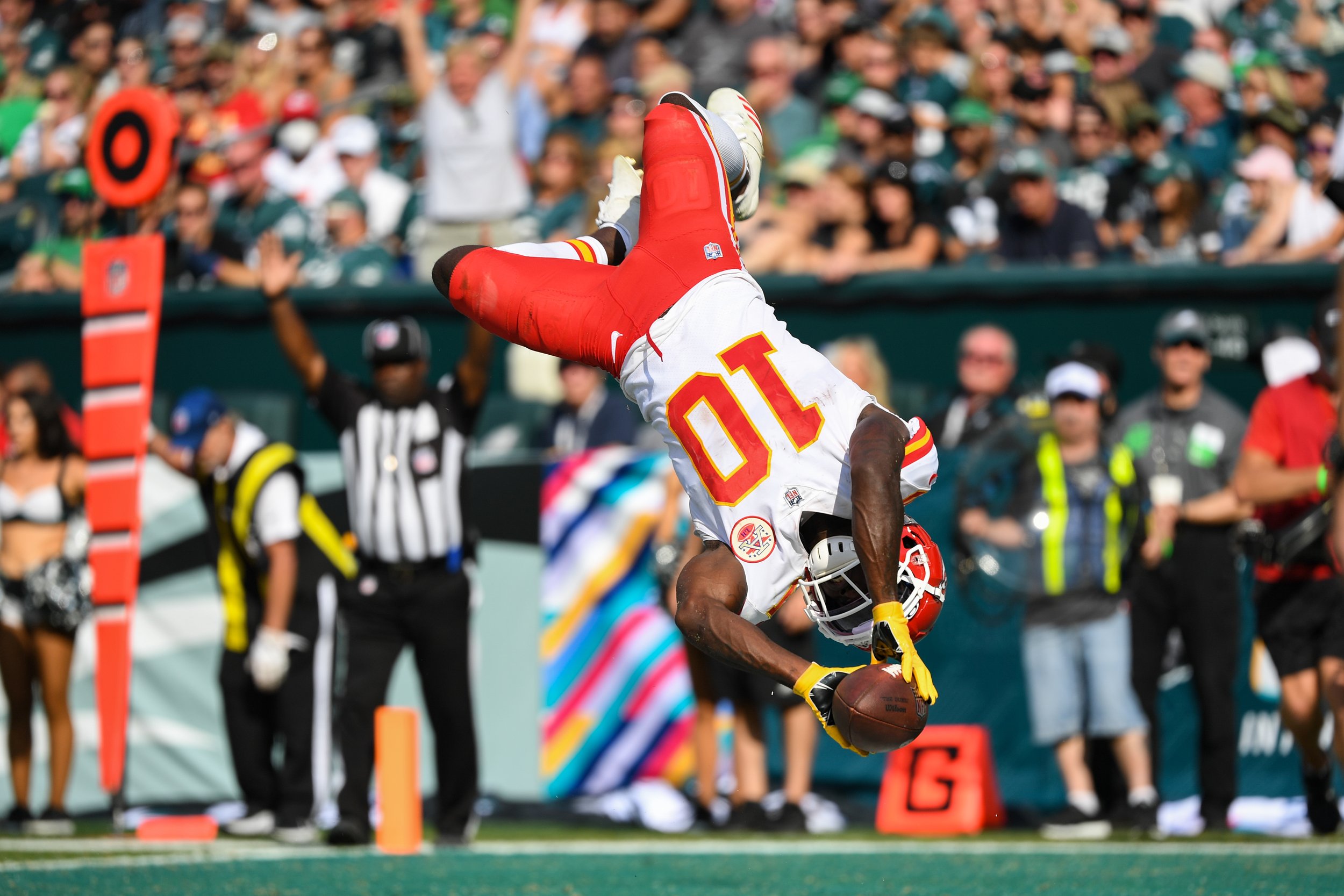The NFL is King in the landscape of sports in North America. Every game matters and on any given Sunday (or Monday, Thursday or Saturday and sometimes Tuesday’s) the team that’s favorited to win can lose. Television broadcasts tell the story of the game in live action, but on the field, during the game photographers also help to tell the games narrative.
Photographing an NFL is a ton of fun and a very cool thing to put on your resume, but it’s also a ton of work, fun work, but work, nonetheless. This is my second season having the privilege of shooting NFL games. My first season, last year, all photographers were relegated to shoot from the stands which had its own set of challenges. Still cool to shoot the games, but totally different from shooting games with fans in the stands and being on the field. The energy and atmosphere with fans in the stands is amazing. In this post I’ll layout some things that I’ve learned, my thought process and workflow during a game.
Equipment prep
The night before the game, I do an equipment check, charge my batteries, make sure all my memory cards are clean and that all my gear is packed. The other thing I like to do is to make sure most of my workflow for transmitting images is created. I use PhotoMechanic for image transmission. In PhotoMechanic I use Code Replacements and Autocomplete to help reduce the time it takes to caption images. I make sure all these items are in the clear and ready to go the night before the game, so that when It’s game day all I have to do is grab my stuff and leave the house.
Arrive Early
The first rule to any job is to be ON TIME! But how early should you arrive? Most NFL teams allow the media to arrive to the stadium 3-4 hours before kick-off. For a 1 o’clock game, I typically leave my house at 9am. I arrive at the stadium at 9:30 or so. Why so early? There are few things you must consider:
Traffic- You have no idea what traffic is going to look like heading to the stadium. Tailgaters typically arrive early. You can be two minutes from the field and traffic leading to the stadium can add an extra 30 minutes when you’re only a mile away from your destination. You also have to account for parking, credential pick-up and if you’re hungry…food. Most all stadiums in the NFL provide the media food and drink.
Setup- Now that you’ve arrived at the stadium, you have to setup all your gear and your computer. I carry three camera bodies and four lenses on me for every game, that takes time to setup. One of the most important things I do before I hit the field is to review my shot list. This is a list of players that my editor has given me to get images of certain players throughout the game.
Warm-ups- The action during the game is not the only thing that matters. Matter of fact the action images only have a lifespan of 24 hours before they’re likely never seen again. They’re cool to get but as a photographer that’s not your only duty. Players typically hit the field in shorts and tees at 10:30am…not all players but some. Go out and make images of players getting loose who are not yet in uniform.
Indianapolis Colts quarterback Carson Wentz does drills during pre-game warm-ups before an NFL football game against the Baltimore Ravens, Monday, Oct. 11, 2021, in Baltimore, Md. (AP Photo/Terrance Williams)
Minnesota Vikings wide receiver Justin Jefferson jogs during pre-game warm-ups while wearing a Free Odell tee-shirt before an NFL football game against the Baltimore Ravens, Sunday, Nov. 7, 2021, in Baltimore. (AP Photo/Terrance Williams)
Pre-game/Player Introductions
Players typically come out in uniforms an hour in a half before the game time. This is a great time to start going through that shot list and capture images of players on that list. Get as many players as you can even if they aren’t on the list. You never know when that image you took will be needed for an article, possibly that week or years down the line.
After the players warm-up in uniforms and go back into the locker room, it’s time for player introductions. Be creative as your access allows to make interesting images. I say be creative as your access allows because this year only league photographers and team photographers are allowed on the field of play before and after games for the teams that I covered, nonetheless, you can still make interesting images.
Pittsburgh Steelers fans hold signs and jerseys for quarterback Ben Roethlisberger who may retire at the end of this season, before an NFL football game against the Baltimore Ravens, Sunday, Jan. 9, 2022, in Baltimore. (AP Photo/Terrance Williams)
Washington Football Team defensive end Chase Young (99) looks on during pre-game warm-ups before an NFL football game against the Tampa Bay Buccaneers, Sunday, Nov. 14, 2021, in Landover, Md. (AP Photo/Terrance Williams)
Los Angeles Rams wide receiver Odell Beckham Jr. looks on during pre-game warm-ups before an NFL football game against the Baltimore Ravens, Sunday, Jan. 2, 2022, in Baltimore. (AP Photo/Terrance Williams)
Baltimore Ravens wide receiver Rashod Bateman (12) runs on to the field during pre-game player introductions before an NFL football game against the Minnesota Vikings, Sunday, Nov. 7, 2021, in Baltimore. (AP Photo/Terrance Williams)
Baltimore Ravens quarterback Lamar Jackson (8) runs out of the tunnel during player introductions before an NFL football game against the Kansas City Chiefs, Sunday, Sept. 19, 2021, in Baltimore. (AP Photo/Terrance Williams)
Game time!!
Now it’s time for the game. You’ve already been at the stadium three hours and trust me, those three hours go by fast, but you know what goes by even faster? The game itself. Cover the entire game and not just the offensive possessions. Find areas with unique vantage points where other photographers aren’t, feel when the momentum shifts, take gambles with angles or positioning and by all means don’t just follow the ball, focus solely on the defense for a few possessions - get creative with it. And remember, you have a shot list that was given to you prior to the game, make sure you get those players.
There’s so much that happens during a game, during plays, between plays, player celebrations, on the sidelines, in the stands – all these variables should be accounted for. Action is cool but it isn’t the only thing that should be covered. If your game take is all ball action, you’re likely missing a lot of shots.
Kansas City Chiefs wide receiver Tyreek Hill (10) does a back flip after scoring a fourth quarter touchdown during an NFL football game against the Philadelphia Eagles, Sunday, Oct. 3, 2021, in Philadelphia. (AP Photo/Terrance Williams)
Los Angeles Rams quarterback Matthew Stafford (9) passes the ball to wide receiver Ben Skowronek (18) during the fourth quarter of an NFL football game against the Baltimore Ravens, Sunday, Jan. 2, 2022, in Baltimore. (AP Photo/Terrance Williams)
Pittsburgh Steelers outside linebacker T.J. Watt (90) reacts to forcing a fumble that was recovered by Pittsburgh during the first quarter of an NFL football game against the Baltimore Ravens, Sunday, Jan. 9, 2022, in Baltimore. (AP Photo/Terrance Williams)
Dallas Cowboys outside linebacker Micah Parsons (11) in action against Washington Football Team guard Brandon Scherff (75) during the first half of an NFL football game, Sunday, Dec. 12, 2021, in Landover, Md. (AP Photo/Terrance Williams)
New York Giants running back Saquon Barkley (26) runs the ball against Washington Football Team cornerback Bobby McCain (20) during the first half of an NFL football game against the Washington Football Team, Thursday, Sept. 16, 2021, in Landover, Md. (AP Photo/Terrance Williams)
Baltimore Ravens defensive end Calais Campbell (93) looks on between plays during the first half of an NFL football game against the Los Angeles Rams, Sunday, Jan. 2, 2022, in Baltimore. (AP Photo/Terrance Williams)
Washington Football Team defensive end Chase Young (99) is helped off the field after an apparent leg injury during the first half of an NFL football game against the Tampa Bay Buccaneers, Sunday, Nov. 14, 2021, in Landover, Md. (AP Photo/Terrance Williams)
Baltimore Ravens tight end Mark Andrews (89) looks on after an incomplete pass during overtime of an NFL football game against the Pittsburgh Steelers, Sunday, Jan. 9, 2022, in Baltimore. (AP Photo/Terrance Williams)
Baltimore Ravens cornerback Brandon Stephens (21) in action against Minnesota Vikings wide receiver Dan Chisena (85) during the first half of an NFL football game, Sunday, Nov. 7, 2021, in Baltimore. (AP Photo/Terrance Williams)
Washington Football Team tight end Ricky Seals-Jones catches fourth quarter touchdown against New York Giants cornerback Adoree' Jackson (22) during an NFL football game, Thursday, Sept. 16, 2021, in Landover, Md. (AP Photo/Terrance Williams)
Kansas City Chiefs defensive back Juan Thornhill (22) tackles Philadelphia Eagles wide receiver DeVonta Smith during the fourth quarter of an NFL football game, Sunday, Oct. 3, 2021, in Philadelphia. (AP Photo/Terrance Williams)
Game Over
I primarily photograph the Baltimore Ravens. There were at least six games that came down to the last play or overtime game winning drives. Just when you thought the game was over, it wasn’t. Catch the game winning play if you’re in position to catch it, if not the reaction shots are sometimes better shots than the play itself. Find an interesting perspective that shows the emotion of how the game ended.
Baltimore Ravens wide receiver Marquise Brown (5) catches a game winning overtime touchdown against Indianapolis Colts defensive back George Odum (30) during an NFL football game, Monday, Oct. 11, 2021, in Baltimore, Md. (AP Photo/Terrance Williams)
Baltimore Ravens wide receiver Marquise Brown (5) is picked up by center Bradley Bozeman (77) after scoring a game winning overtime touchdown during an NFL football game against the Indianapolis Colts, Monday, Oct. 11, 2021, in Baltimore. (AP Photo/Terrance Williams)
Indianapolis Colts running back Jonathan Taylor walks off the field after an overtime loss to the Baltimore Ravens in an NFL football game, Monday, Oct. 11, 2021, in Baltimore, Md. (AP Photo/Terrance Williams)
Baltimore Ravens place kicker Justin Tucker (9) raises the ball after kicking a game winning field goal in overtime to victory against the Minnesota Vikings after an NFL football game, Sunday, Nov. 7, 2021, in Baltimore. (AP Photo/Terrance Williams)
Pittsburgh Steelers head coach Mike Tomlin, masked, reacts to an overtime game-winning kick by kicker Chris Boswell after an NFL football game against the Baltimore Ravens, Sunday, Jan. 9, 2022, in Baltimore. (AP Photo/Terrance Williams)
Transmitting images
The most important thing you before the game, during the game and after the game is transmit and caption your images immediately. As stated earlier, I use PhotoMechanic to caption and transmit images. During the game I’ll tag the images that I perceive are my best shots from the game and ingest those locked files for captioning.
If you’ve done all your leg work prior to the game (See Equipment Prep section) all you have to do now is ingest your images, edit, caption and transmit. Simple enough, but very important. This can be a tedious task. Be sure to proofread and review your captions before you transmit your images. One thing of note, editing for a wire service consist of cropping and very minimal color adjustment. At no time should you change/alter the integrity of the original image, that’s a definite no-no!
The media workroom at M&T Bank Stadium in Baltimore.
Well that’s it! I hope this post sheds light on the day and flow of photographing an NFL game. It’s a long, fun and exciting day. Be creative.























